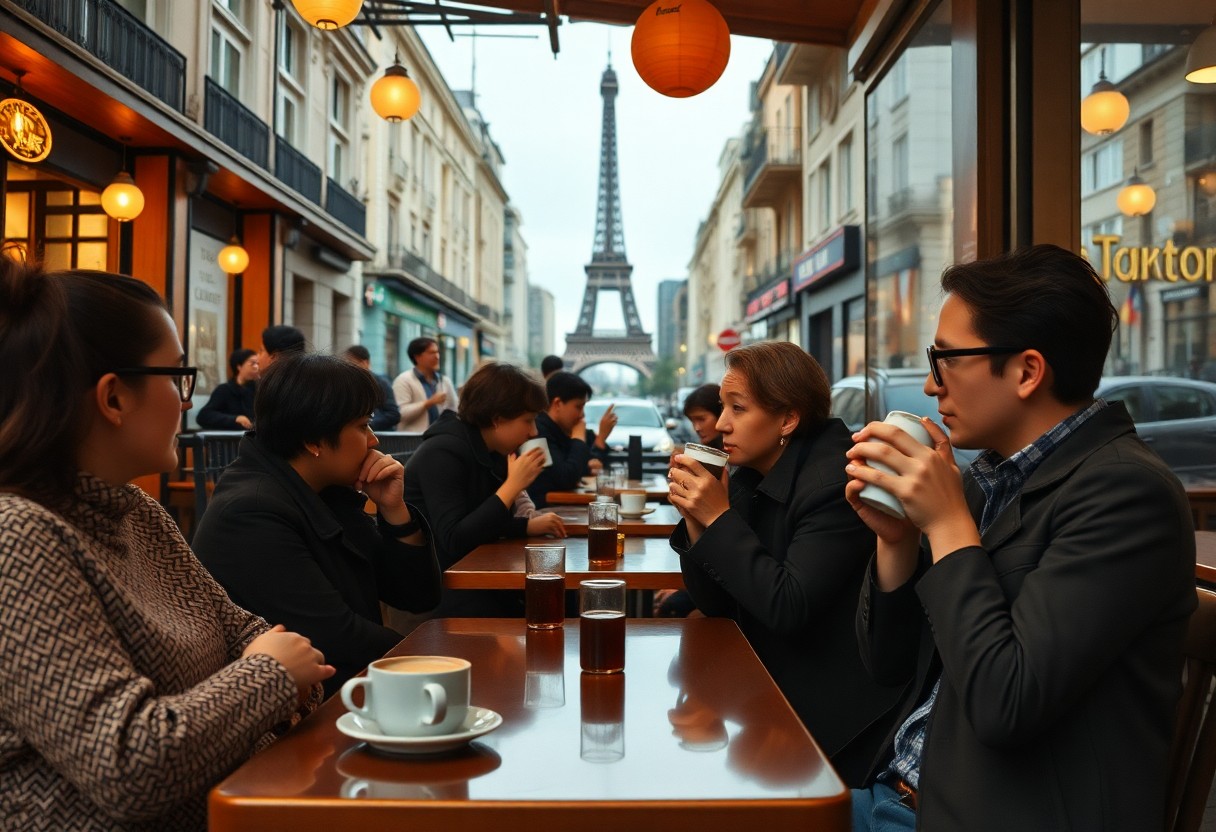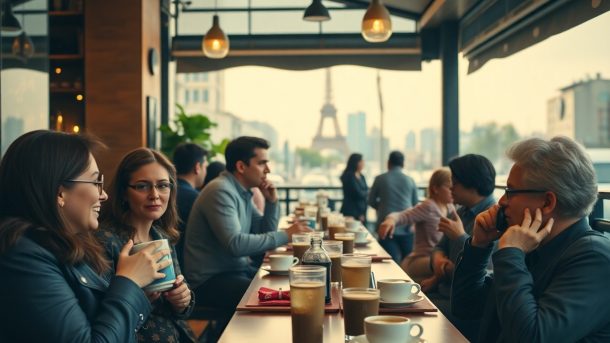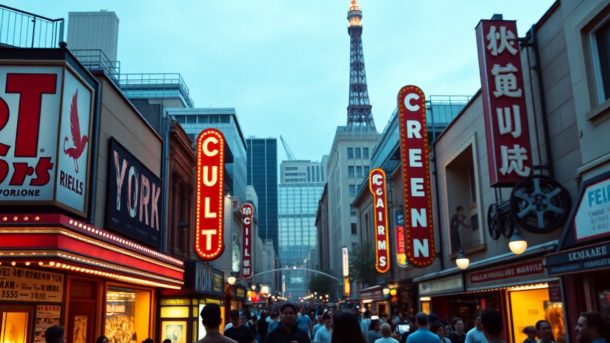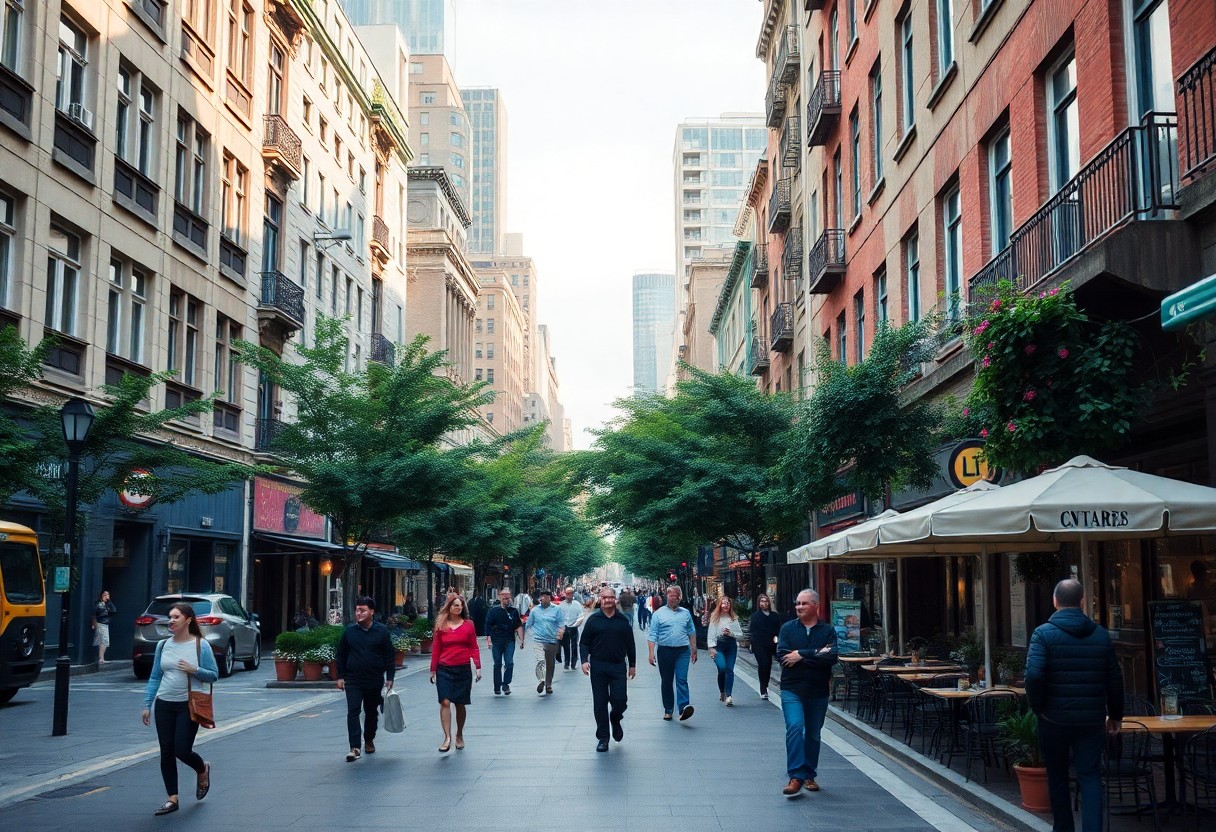It’s time to initiate on a global journey that celebrates one of your favorite beverages: coffee. If you consider yourself a true coffee enthusiast, exploring international cities known for their vibrant coffee cultures will thrill your taste buds. From bustling cafes to unique brewing techniques, this guide will unveil the best destinations where you can indulge in exceptional coffee experiences. Whether you’re planning your next adventure or dreaming of far-off places, get ready to discover where your coffee passion can take you.
Key Takeaways:
- Diverse Coffee Cultures: Each city offers a unique blend of local coffee traditions, showcasing various brewing techniques and flavor profiles.
- Quality Roasteries: Many of these international cities are home to top-notch coffee roasters, ensuring high-quality beans and expertly crafted brews.
- Vibrant Café Scenes: Coffee lovers will find a plethora of charming cafés, each providing an inviting atmosphere to enjoy their favorite drinks and socialize.

Top Global Coffee Cities
A diverse range of international cities beckons coffee lovers with their unique brews and vibrant café cultures. If you’re an avid coffee enthusiast, check out this Bucket list coffee cities to discover the best spots around the world.
Seattle, USA
Behind its misty skyline and rich Pacific Northwest culture, Seattle stands as a pioneering city for coffee lovers. Home to the first Starbucks, this city is a hub for indie roasters and artisanal cafes, making it a haven for your caffeine cravings. Don’t miss the chance to explore its intricate coffee shops, each with its distinctive blends and brewing methods.
Melbourne, Australia
Australia has gained global recognition for its thriving coffee culture, particularly in Melbourne. This city boasts an impressive array of specialty coffee shops, where passionate baristas prioritize quality and experimentation. From flat whites to cold brews, the local coffee scene blends traditional Ethiopian beans with modern brewing techniques, appealing to both purists and adventurous drinkers.
Cities around Melbourne feature street-side cafes where you can enjoy your coffee while soaking in the bustling atmosphere. With a strong emphasis on sustainable practices and local sourcing, Melbourne invites you to savor a world-class coffee experience at every turn.
Addis Ababa, Ethiopia
Cities like Addis Ababa offer a mesmerizing journey through the birthplace of coffee. Here, you’ll uncover a tradition that dates back centuries, with local coffee ceremonies celebrated in homes and cafes alike. Addis Ababa’s vibrant coffee scene showcases the unique flavors of Ethiopian beans, making it a must-visit destination for any coffee lover.
Hence, Addis Ababa not only serves up aromatic brews but also provides you with a cultural experience steeped in history. Engage with friendly locals as they prepare coffee in the traditional way, and immerse yourself in the rich heritage that surrounds every cup.
Vienna, Austria
Beside its historical charm, Vienna dazzles with its exquisite coffeehouse culture, where time seems to stand still. You’ll find elegant cafes that offer a comfortable environment to sip on a Melange or an Einspänner while enjoying the local ambiance. Every establishment is steeped in tradition, making your coffee experience here unforgettable.
Coffee in Vienna transcends mere caffeine; it’s a communal ritual that invites you to linger over your drink. From grand coffee houses to intimate bistros, you’ll discover a place where you can unwind, read, or engage in conversation, all while enjoying some of the finest brews the city has to offer.
Coffee Culture and History
Some of the best international cities for coffee lovers are steeped in rich coffee culture and history. This fascinating journey through time reveals how coffee has evolved from a simple beverage to a global phenomenon, connecting people across diverse cultures. As you explore these vibrant cities, you’ll discover not only unique brews but also the stories behind the beans, the art of preparation, and the communal spaces that have emerged around this beloved drink.
Historical Origins of Coffee
By tracing the origins of coffee, you will find it is believed to have first emerged in Ethiopia, where legend credits a goat herder named Kaldi with its discovery in the 9th century. He noticed that his goats became energetic after eating the berries from a certain shrub. This fascinating tale led to the first brewing of coffee in the Arab world, ultimately spreading into Europe and beyond, paving the way for the global coffee culture we know today.
Modern Coffee Trends
Historical shifts in coffee consumption have paved the way for modern trends that highlight specialty brews, sustainable sourcing, and innovative brewing techniques. You may notice an increasing focus on direct trade relationships with farmers, ensuring quality and promoting ethical practices, all while introducing you to unique flavor profiles.
It is exciting to see how modern coffee trends emphasize artisan techniques such as pour-over, cold brew, and nitro coffee, enhancing your coffee experience. Many cafes now offer a variety of brewing methods, encouraging you to explore different flavors and aromas. Additionally, the rise of plant-based alternatives and an emphasis on eco-friendly practices are reshaping your coffee shop visits, making them not just about coffee but also about sustainability and personal choice. Such trends foster a deeper appreciation for the beverage and the cultural practices surrounding it.
Coffee Specialty Shops
Your passion for coffee can lead you to some of the best specialty shops around the globe. These cafés focus on high-quality beans, unique brewing methods, and expert baristas who elevate the coffee experience. Whether you’re in search of single-origin brews or innovative blends, these specialty shops become your haven for exploring coffee culture in an unparalleled way.
Must-Visit Cafés
On your journey to discover exceptional coffee, there are must-visit cafés that craft extraordinary beverages using artisanal methods. Each spot boasts its own unique atmosphere, and the stories behind their beans will enrich your coffee experience. Dive into these local favorites that have garnered attention for their exceptional quality and inviting ambiance.
Unique Brewing Techniques
At many specialty shops, you’ll find an array of unique brewing techniques that highlight the intricacies of each coffee bean. From the slow pour-over method to mesmerizing siphon brewing, these practices draw out distinct flavors and aromas that traditional methods may overlook.
Also, exploring these techniques can deepen your appreciation for coffee. Not only do they reflect the barista’s skill, but they also allow you to experience the nuances of different coffee varieties. Techniques like cold brew and nitro-infused coffee bring yet another layer of richness and novelty to your cup. Be sure to ask the baristas about their brewing methods for an enlightening experience!
Coffee Festivals Around the World
Keep your calendar marked for the vibrant coffee festivals that take place around the globe. From the Italian Espresso Festival in Rome to the Seattle Coffee Festival, these events offer you the chance to explore the rich diversity of coffee culture, sample unique brews, and connect with fellow coffee aficionados. You’ll delight in the engaging workshops, live demonstrations, and the opportunity to meet renowned baristas while gaining insights into the intricacies of coffee production and preparation.
Celebrating Coffee Culture
Behind every coffee festival is a celebration of the deep-rooted culture surrounding this beloved beverage. These gatherings bring you face-to-face with coffee growers, roasters, and enthusiasts who share their passion and knowledge. The festivals not only showcase exquisite brews but also highlight the stories of the farmers and producers who cultivate the beans you savor, making every sip a meaningful experience.
Major Annual Events
By participating in major annual coffee events, you place yourself at the center of the coffee universe. From barista competitions to tasting sessions, these festivals are designed to enhance your appreciation for coffee in all its forms. They create a vibrant atmosphere where you can engage with industry leaders and explore the latest trends shaping the coffee scene.
World-renowned coffee festivals draw thousands of attendees each year, giving you a unique opportunity to immerse yourself in the latest innovations. Notable events like the Specialty Coffee Expo and the London Coffee Festival feature workshops, tasting booths, and exclusive releases from top coffee brands. These gatherings not only celebrate coffee but also foster community among enthusiasts, making them a must-visit for anyone looking to deepen their knowledge and enjoy the wonders of coffee.
Sustainable Coffee Practices
Not all coffee is created equal, especially when it comes to sustainability. As a coffee lover, you should seek out cities that prioritize environmentally friendly practices. Sustainable coffee involves responsible farming, ethical purchasing, and a commitment to preserving the natural resources of the regions where coffee is grown. By choosing cafes and brands that embody these values, you can enjoy your favorite brew while supporting the planet and its communities.
Farm-to-Cup Initiatives
Around the globe, innovative farm-to-cup initiatives are reshaping the coffee experience. These programs bridge the gap between growers and consumers, allowing you to connect directly with coffee farms. By sourcing beans straight from the producer, you gain a deeper appreciation for the journey of your coffee while ensuring that farmers receive fair compensation for their hard work. This approach not only enhances flavor profiles but also promotes transparency and sustainability in the coffee industry.
Ethical Sourcing
Initiatives focused on ethical sourcing are gaining momentum, ensuring that your coffee is harvested under fair conditions. This means working with suppliers who prioritize fair wages, safe working environments, and social equity for their employees. By supporting brands that engage in ethical sourcing, you align your coffee choices with broader social values, contributing to positive change in coffee-growing communities.
The emphasis on ethical sourcing in the coffee industry is transforming the way you enjoy your daily brew. With an increasing number of roasters committed to transparency, you can feel confident that your coffee is sourced from farms that uphold labor rights and sustainable practices. This movement not only benefits the communities that produce your coffee but also enhances its quality, allowing you to savor every sip with a clear conscience.

Conclusion
With these considerations, you can begin on a delightful journey to the best international cities for coffee lovers. Each city offers its own unique coffee culture, vibrant cafés, and local roasters ready to satisfy your caffeine cravings. Whether you prefer the rich espressos of Italy, the innovative brews of Australia, or the cozy ambiance of American coffee shops, you can find a destination that caters to your taste. So pack your bags and get ready to explore these coffee havens that promise unforgettable experiences tailored to your palate.
Q: What are some of the top international cities known for their coffee culture?
A: Several cities around the world are renowned for their vibrant coffee culture. Among the best are:
- Seattle, USA – Known for its rich coffee history and as the birthplace of Starbucks, Seattle has a plethora of independent coffee shops that offer artisanal brews.
- Melbourne, Australia – Known for its café culture, Melbourne boasts a variety of unique coffee blends and an emphasis on espresso-based drinks.
- Lisbon, Portugal – With its traditional cafés and strong espresso, Lisbon offers a charming environment for coffee aficionados who enjoy sipping their drinks in scenic settings.
- São Paulo, Brazil – As one of the largest coffee producers in the world, São Paulo is home to numerous specialty coffee shops that incorporate local flavors.
- Tokyo, Japan – Tokyo’s obsession with coffee includes a blend of traditional and modern practices, along with unique brewing techniques that set the cafes apart.
Q: What are some experiences that coffee lovers can expect in these cities?
A: Coffee lovers visiting these international cities will find a range of experiences tailored to their passion. Some highlights include:
- Coffee Tasting Tours – Many cities offer guided tours that take coffee enthusiasts through various cafés, allowing them to sample different roasts and brewing methods.
- Workshops and Classes – Interested individuals can participate in workshops that teach the art of brewing, latte art creation, and cupping techniques.
- Local Coffee Festivals – Many cities host annual coffee festivals that feature tastings, competitions, and talks from industry experts.
- Innovative Coffee Shops – Visitors can explore unique venues that often combine art, music, and coffee, making for a holistic café experience.
- Traditional Cafés – In places like Lisbon and Vienna, coffee lovers can immerse themselves in the history of coffee by visiting classic cafés that have been around for centuries.
Q: How can I find the best coffee spots when traveling to these cities?
A: To discover the best coffee spots while traveling, consider the following methods:
- Online Reviews and Guides – Websites like Yelp and TripAdvisor are excellent resources for finding highly-rated coffee shops in any city.
- Social Media – Platforms like Instagram and TikTok often showcase trending cafés, making it easier to discover popular local spots.
- Mobile Apps – There are apps specifically designed for coffee enthusiasts that highlight cafés based on location and user recommendations.
- Ask Locals for Recommendations – Engaging with locals can lead to discovering hidden gems that may not be widely advertised.
- Coffee Tours – Consider booking a coffee tour; professional guides can take you to their favorite cafés, ensuring a unique and tailored experience.












